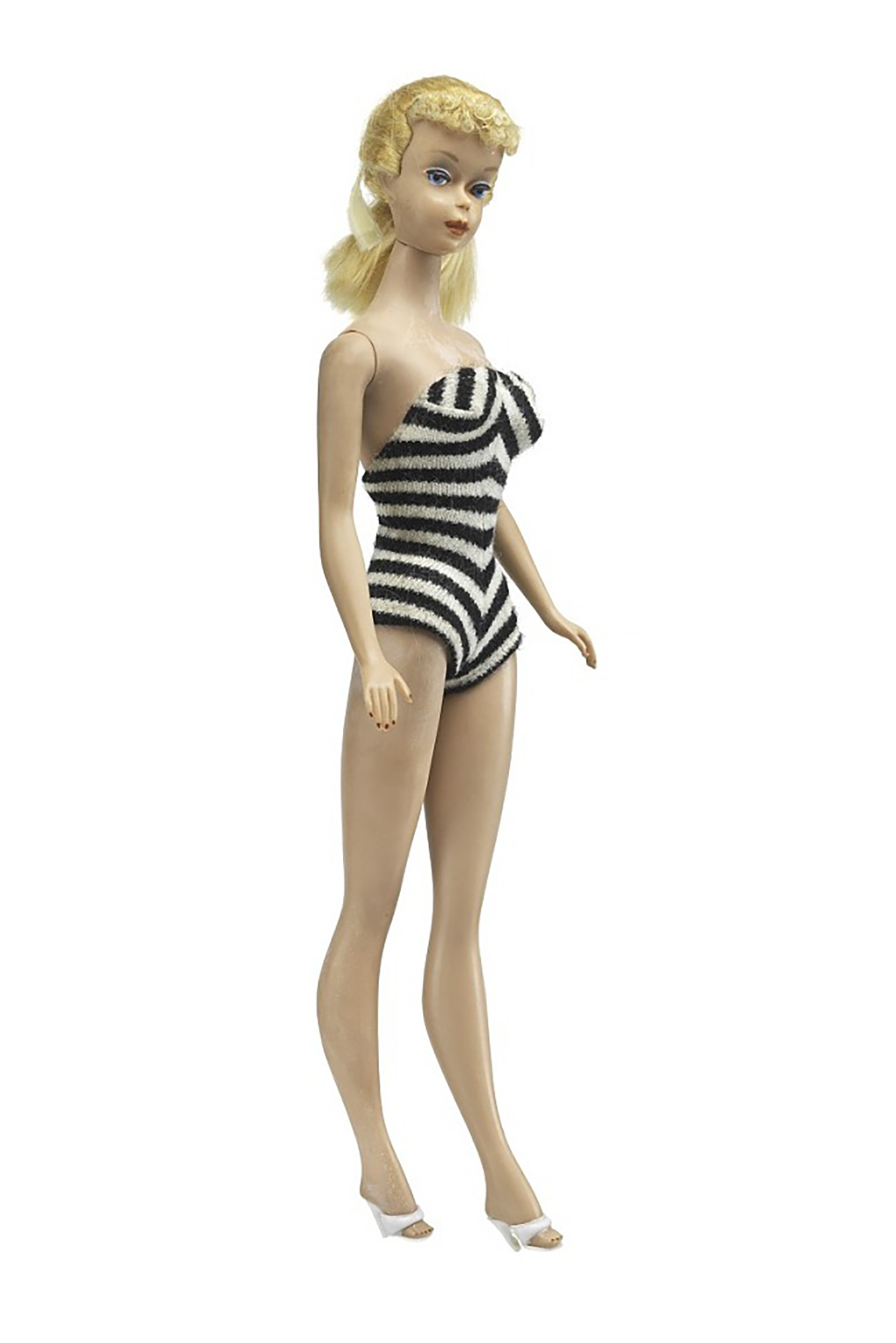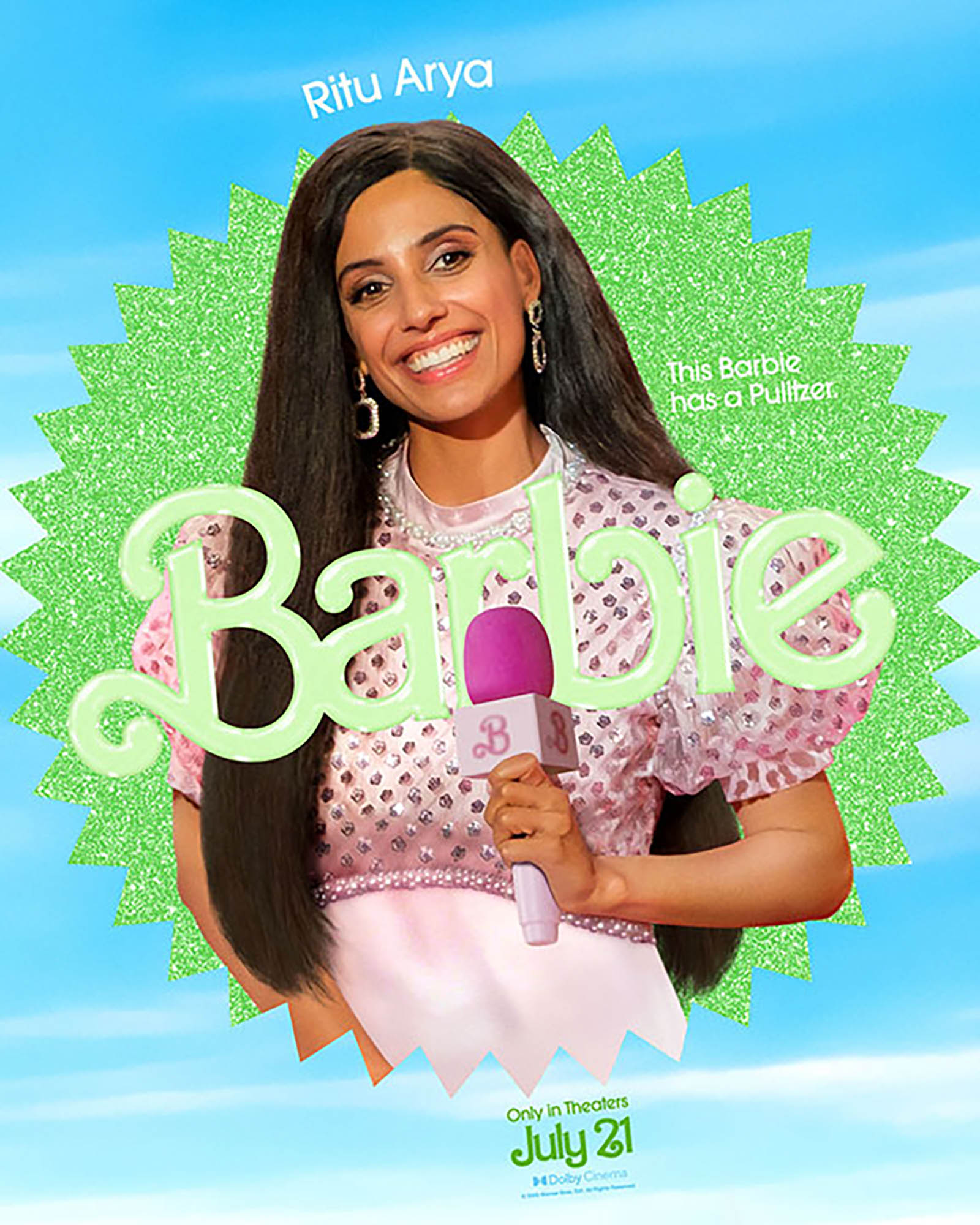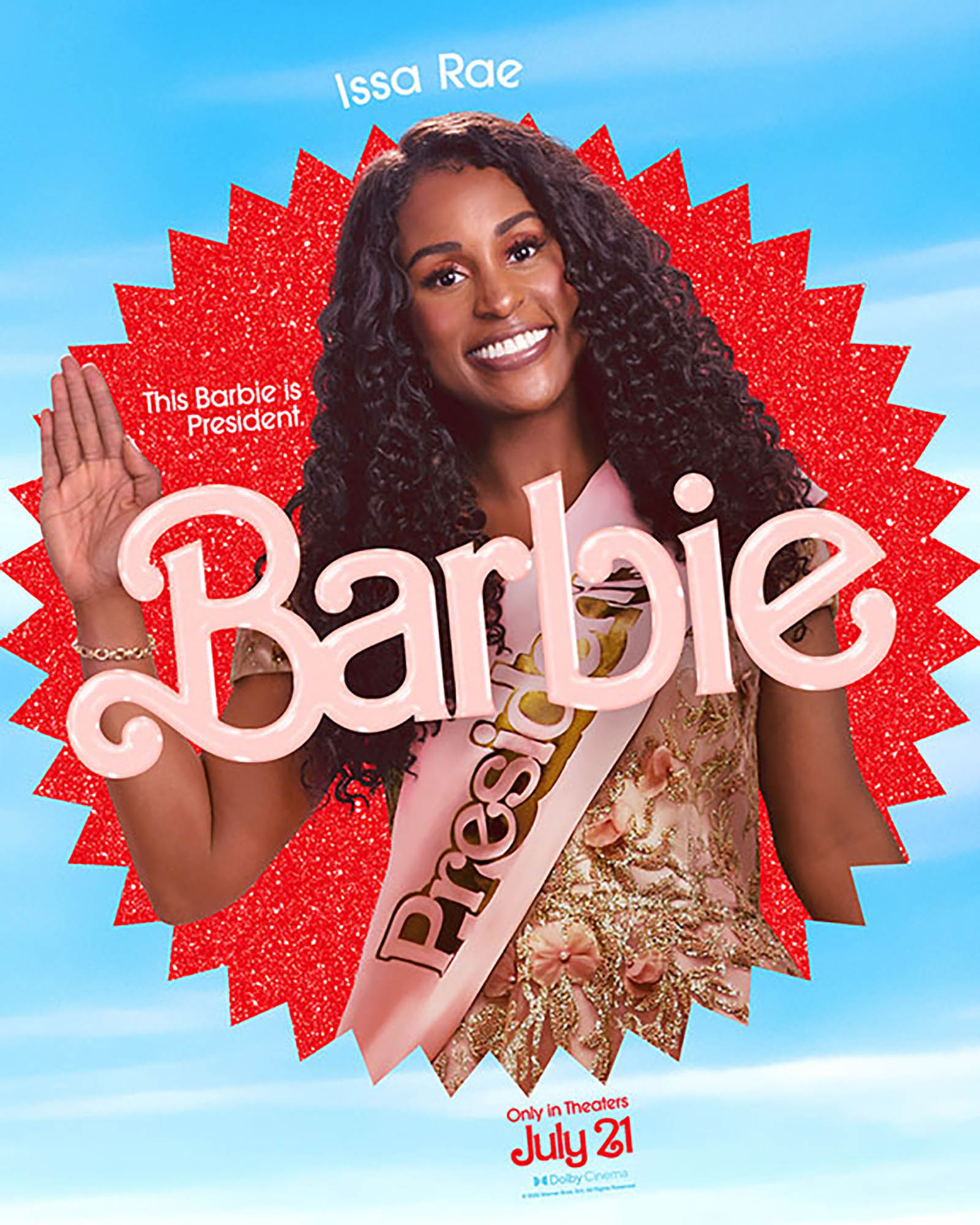Why Are We Obsessed with Barbie? And Why Is Barbie Still Here?
Barbie stands on flat feet for the first time in this summer’s most anticipated film. Photo courtesy of Warner Bros. Pictures
Why Are We Obsessed with Barbie? And Why Is Barbie Still Here?
BU experts in marketing, women’s, gender, and sexuality studies, and child development offer their take on the movie event of the summer and the doll’s role in our culture
You probably feel like you cannot escape Barbie fever at the moment. Barbie, directed by Greta Gerwig and out in theaters July 21, stars Margot Robbie as the film’s titular doll who takes Ken (Ryan Gosling) on a journey to the real world on a quest to find herself.
It is this summer’s most anticipated film (see you next weekend, Oppenheimer)…but why? After all, Barbie is coming up on her 60th birthday in real world years (wouldn’t it be nice if we all aged so well?). We wanted to understand the collective obsession with the originally blond-haired, blue-eyed, 12-inch-tall doll, so we talked to Boston University experts to get their take on the film’s bonkers marketing campaign, Barbie’s problematic shortcomings, her role-model status, and the power of nostalgia.
The film’s marketing gets an A+
Produced by Warner Bros. Discovery and carrying a $100 million marketing budget, Barbie also received a boost from its 100-plus brand collaborations, from Pinkberry frozen yogurt to a promotion with Airbnb that allowed the winners to stay in Barbie’s Malibu house. Go ahead. Google “Barbie” right now, and watch your search page explode in pink fireworks. That costs money. Lots of money.
“The best PR isn’t when you do your own public relations. It’s when other people are doing it for you,” says Amy Shanler (CAS’96, COM’96,’04), a College of Communication associate professor of the practice of public relations. “And that’s what I think is really interesting about Barbie’s marketing, that through their licensing agreements with so many other companies, and through their social media activations, they’ve been able to create a lot of organic conversations about the movie, about the experiences among people. And to me, that’s better than anything that Mattel or the movie studio could have ever done.”
The screenwriters know how to use the power of nostalgia…
Another reason people plan to see the film in theaters is that the toy is iconic to their childhood; they were giddy when they saw Robbie sport Barbie’s iconic black-and-white swimsuit in one of the film’s early trailers. Shanler says she passed down her Barbie dolls to her daughters, who are now in their teens, and she hopes they can go see the film together.
A Barbie doll is still often one of the first toys a young girl receives, synonymous with a yo-yo or a bag of chunky Duplos. These first toys “can foster a child’s development by encouraging language and communication and by offering opportunities for pretend play and problem-solving,” says Ann Herzog (Wheelock’93), a Wheelock College of Education & Human Development clinical instructor of child life and family-centered care. “Play with dolls, in particular, allows for emotional expression, developing empathy, and practicing problem-solving skills.”
…but they also don’t let Barbie off the hook

Since her introduction in 1959, some feel that Barbie has created damaging stereotypes about how women and girls see themselves, and further, has affected their behavior. These stereotypes have had “huge ramifications for gender roles in the United States and globally,” says Carrie Preston, a College of Arts & Sciences professor of English and of women’s, gender, and sexuality studies. Studies done on the doll have explored how playing with it often negatively “impacts body image, understanding of femininity, masculinity, and sexuality, career choices, self-esteem, communication strategies, and more,” she says.
Growing up in the 1980s—the height of the Barbie craze—Preston is proud to say that she did not own any. “I only played with them at the houses of friends,” she says. “My mother did not like Barbie and thought she was a bad influence on children, especially girls, and I adopted her view.”
Barbie is a girl boss
Despite these faults, others feel that Barbie represents a shining example of a girl boss, says Keara Sebold (GRS’26), a PhD student studying 20th-century cultural history, with a focus on gender, sexuality, and youth culture. Sebold says the doll was introduced during the birth of second-wave feminism, the time of Betty Friedan’s The Feminine Mystique, which made “a lot of these nuclear family housewives start to speak out against the roles they had been pushed into.”
Sebold says these women liked that Barbie allowed their daughters to play a game that was not just “mom and baby”—Barbie was never married and never had kids, even though her friends had kids. The launching of the toy “comes out of that cultural moment of mothers who maybe felt like they didn’t have a choice in joining the nuclear family at the mid-century moment and wanted better for their daughters,” she says.


Different versions of Barbie appear in the new film, including President Barbie and Journalist Barbie. Photos courtesy of Warner Bros. Pictures
Mattel has been forced to adjust to the times
In the decades since Barbie’s arrival, Mattel has worked (sometimes stubbornly and slowly) to update the doll and her image. She is now sold in different sizes and shapes and skin colors, and last year the company introduced dolls with hearing aids and prosthetic legs. “I think they’re very concerned with keeping her on top of that cultural moment as much as they can, and making her relevant,” says Sebold, who plans to see the film with friends.
Shanler says she talks about Barbie frequently in her classes because the brand is a strong example of a company recognizing its responsibility in shaping culture.
“With her popularity, Mattel realized that they have a larger responsibility to empower, educate, and inspire,” Shanler says. “I admire Barbie for stepping up and really bringing inclusion so that people could see themselves in an iteration of a Barbie… It’s not just something that’s for the fashionable, it’s really part of all of us.”
Comments & Discussion
Boston University moderates comments to facilitate an informed, substantive, civil conversation. Abusive, profane, self-promotional, misleading, incoherent or off-topic comments will be rejected. Moderators are staffed during regular business hours (EST) and can only accept comments written in English. Statistics or facts must include a citation or a link to the citation.